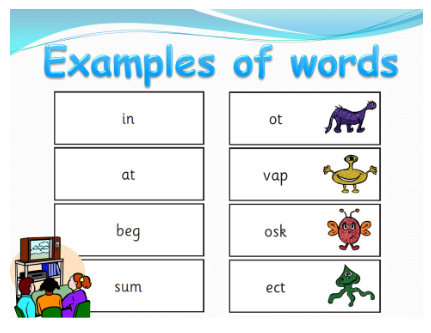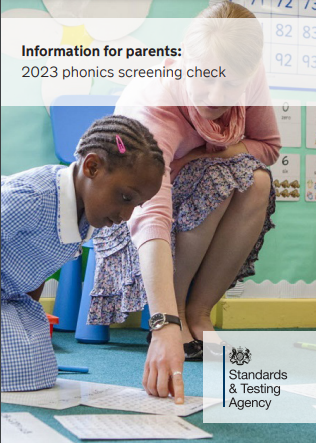Year 1 Phonics Screening Check
"The Year 1 phonics screening check is not a formal test, but a way for teachers to ensure that children are making sufficient progress with their phonics skills to read words and that they are on track to become fluent readers who can enjoy reading for pleasure and for learning."
1. What is the Year 1 phonics screening check?
The phonics screening check is taken individually by all children in Year 1 in England. It is designed to give teachers and parents information on how your child is progressing in phonics. It will help to identify whether your child needs additional support at this stage so that they do not fall behind in this vital early reading skill.
2 .What is in the phonics screening check?
There are two sections in this 40-word check and it assesses phonics skills and knowledge learned through Reception and Year 1. Your child will read up to four words per page for their teacher and they will probably do the check in one sitting of about 5-10 minutes.
3. What sort of check is it and is it compulsory?
It is a school-based check to make sure that your child receives any additional support promptly, should they need it. It is not a stressful situation as the teacher will be well-equipped to listen and understand your child’s level of skills.
There will be a few practice words first to make sure your child understands the activity.
4. What does it check?
It checks that your child can:
- Sound out and blend graphemes in order to read simple words.
- Read phonically decodable one-syllable and two-syllable words, e.g. cat, sand, windmill.
- Read a selection of nonsense words which are referred to as pseudo words.
5. What are nonsense or pseudo/alien words and why are they included?
These are words that are phonically decodable but are not actual words with an associated meaning e.g. brip, snorb. Pseudo words are included in the check specifically to assess whether your child can decode a word using phonics skills and not their memory.
The pseudo words will be shown to your child with a picture of a monster and they will be asked to tell their teacher what sort of monster it is by reading the word. This not only makes the check a bit more fun, but provides the children with a context for the nonsense word which is independent from any existing vocabulary they may have. Crucially, it does not provide any clues, so your child just has to be able to decode it. Children generally find nonsense amusing so they will probably enjoy reading these words.
6. Is there a pass mark?
In order to achieve expected standard your child must be able to read 32 or more of the 40 words on the screening test. If your child does not reach the expected standard in this test please do not panic! The Year 1 Screening Check also allows teachers to assess the possible learning needs, phonic skills and/or audible discrimination presented by each child. Should your child need extra support to achieve the expected level for reading, this support will be implemented and continued throughout Year 2, so that they can take this test again at the end of Year 2.
7. What happens to the results?
The school will report your child’s results to you by the end of the summer term as well as to the local authority, but the results won’t be published in a league table as with SATs. If you have any concerns, do talk to your teacher about this in a parents’ meeting or after school.
8. Do all schools and children have to participate?
All schools and academies in England must take part in the phonics screening check unless they are an independent school. There is a process in place for reviewing children with special educational needs, so if your child’s teacher thinks there are very special reasons related to your child and their needs that make them think the phonics screening check may not be appropriate, they will decide on appropriate action and discuss this with you.
9. What should I do if my child is struggling to decode a word?
- Say each sound in the word from left to right.
- Blend the sounds by pointing to each letter, i.e. /b/ in bat, or letter group, i.e. /igh/ in sigh, as you say the sound, then run your finger under the whole word as you say it.
- Talk about the meaning if your child does not understand the word they have read.
- Work at your child’s pace.
- Always be positive and give lots of praise and encouragement.

Useful Phonics Websites
- Alphablocks - lots of videos and games to help with recognising letters and reading. www.bbc.co.uk/cbeebies/shows/alphablocks
- Phonics Games - A variety of different interactive games www.ictgames.com/mobilePage/forestPhonics/index.html
- Letters and sounds initial sound game- this game lets your child reveal a sound/letter and then try to find the picture that starts with the same sound. www.letters-and-sounds.com/phase-3-games.html
- BBC Bitesize - this game allows your child to listen to the sounds in a word and to pick the correct letter. Then they can see what word they have made with all of the sounds together. www.bbc.co.uk/bitesize/topics/zyfkng8/articles/zt27y4j
- Phonics play - there are several free games to play that will help your child with their blending and segmenting. www.phonicsplay.co.uk/Phase3Menu.html
For more information, download the 'Information for parents' guide, by clicking on the image below.



